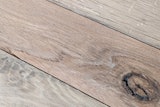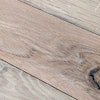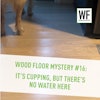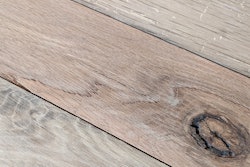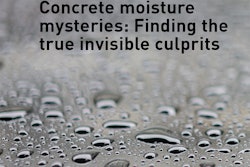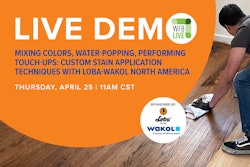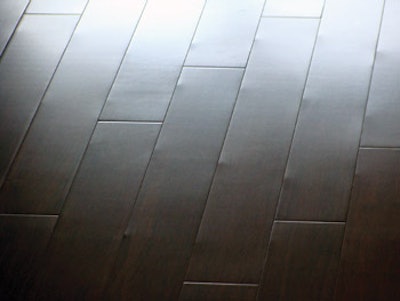
The Problem
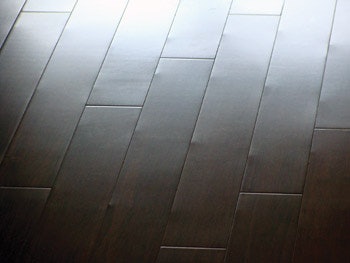
The Procedure
The home had 5/8-by-3¾-inch carbonized strand (or woven) bamboo pneumatically stapled with 15.5-ga wire staples over a single layer of brand-name OSB. The subfloor, which was over a crawl space, was nailed over a joist span of 20 inches o.c., and a white silicone vapor retarder was used over the entire subfloor.
Immediately after the installation, the homeowner asked the installers if those little bumps would eventually go away. They told her, "Sure, unless your flooring is defective."
The Cause
The manufacturer's guidelines for fastening strand bamboo were not followed, but the most glaring issue was an unfortunate combination of poorly educated installers and a challenging floor. The glue ratio or the amount of glue used in the bonding process of woven bamboo fibers not only accounts for its added weight but also greater board density and, therefore, potential nailing difficulty. Among the most common installation-related causes for surface dimpling in strand bamboo and other types of dense flooring are: poorly seated nailing machines, using incorrect nailers, or using incorrect fastener thickness or gauge. Because the size of the dimpling found just above the nail is directly related to the fastener gauge, nail gun manufacturers have developed specialized nailing machines to accommodate thinner-gauge fasteners, thereby minimizing or reducing dimpling.
While the traditional 16-ga cleat-type nailers and 15-ga ½-inch crown staples have their place, using them is usually the No. 1 cause of surface dimpling in bamboo flooring and other denser wood species. When using nails with strand bamboo, the thinner 18-ga cleat nailing machines are more appropriate. The 15-ga ½-inch crown staple machines-pneumatic or manual-are not generally recommended because the drive-bar action that delivers the staple mimics a wood chisel, often snapping or fracturing the bamboo tongues as it seats the staple.
How to Fix the Floor
In addition to the problem of aesthetics, over time surface dimpling in prefinished materials can lead to edge-splitting, chipping and finish spidering. Resanding the floor may remove most of the dimples but would also void the manufacturer's finish warranty and remove an excessive amount of the surface. Sadly, a total replacement of the floor may be necessary in the worst cases, such as this one.
In the Future
Product education is key to successful installations. Most manufacturers are more than willing to assist with product knowledge-some supply written instructions in each box and also post them on their website. Installers should do their homework before installing unfamiliar products. If these installers had, they would have found recommendations to minimize dimpling, like choosing the appropriate nailer, adapter and fastener, or even options to glue the floor down. As a paid professional, you benefit by making it your business to understand the nuances of unfamiliar products ... before you commit to the installation.










